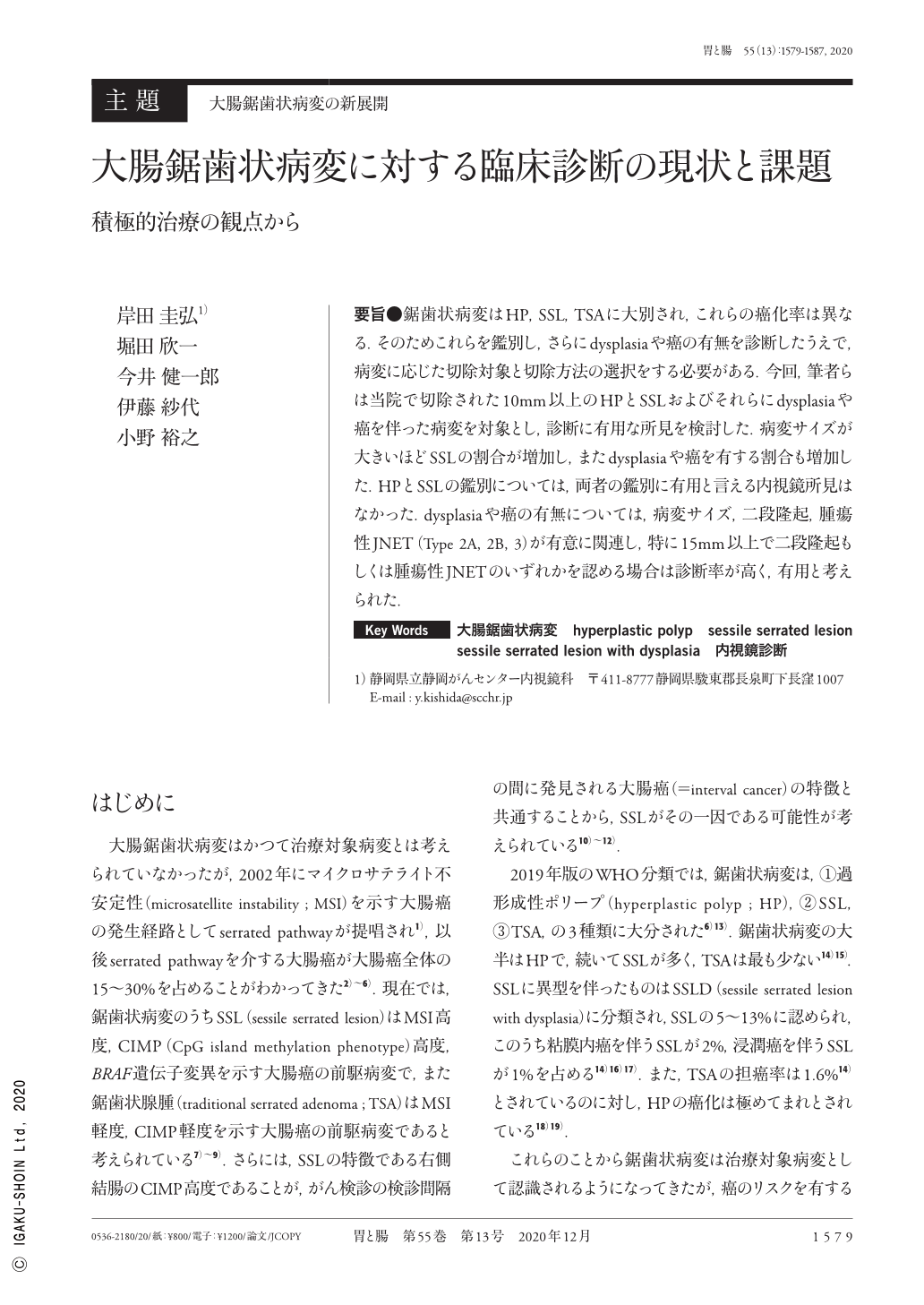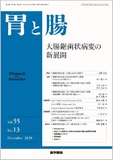Japanese
English
- 有料閲覧
- Abstract 文献概要
- 1ページ目 Look Inside
- 参考文献 Reference
- サイト内被引用 Cited by
要旨●鋸歯状病変はHP,SSL,TSAに大別され,これらの癌化率は異なる.そのためこれらを鑑別し,さらにdysplasiaや癌の有無を診断したうえで,病変に応じた切除対象と切除方法の選択をする必要がある.今回,筆者らは当院で切除された10mm以上のHPとSSLおよびそれらにdysplasiaや癌を伴った病変を対象とし,診断に有用な所見を検討した.病変サイズが大きいほどSSLの割合が増加し,またdysplasiaや癌を有する割合も増加した.HPとSSLの鑑別については,両者の鑑別に有用と言える内視鏡所見はなかった.dysplasiaや癌の有無については,病変サイズ,二段隆起,腫瘍性JNET(Type 2A, 2B, 3)が有意に関連し,特に15mm以上で二段隆起もしくは腫瘍性JNETのいずれかを認める場合は診断率が高く,有用と考えられた.
Serrated lesions are classified into HP(hyperplastic polyp), SSL(sessile serrated lesion), and TSA(traditional serrated adenoma). Their rates of malignant transformation differ from each other. Thus, these lesions need to be differentiated and assessed for the presence of dysplasia or cancer before selecting the resection target and determining treatment method. In this study, we examined≥10-mm HP, SSL, and those with dysplasia or cancer resected at our hospital to identify diagnostically useful findings. As the lesion size increased, greater proportions were accounted for lesions classified as SSL and lesions with dysplasia or cancer. No endoscopic findings were useful to differentiate between HP and SSL. The following findings were significantly associated with the lesions with dysplasia or cancer:lesion size, double elevation, and neoplastic JNET(types 2A, 2B, and 3). Particularly, the diagnostic value of lesions with dysplasia or cancer was greater when the lesion size was ≥15mm and double elevation or neoplastic JNET were identified.

Copyright © 2020, Igaku-Shoin Ltd. All rights reserved.


